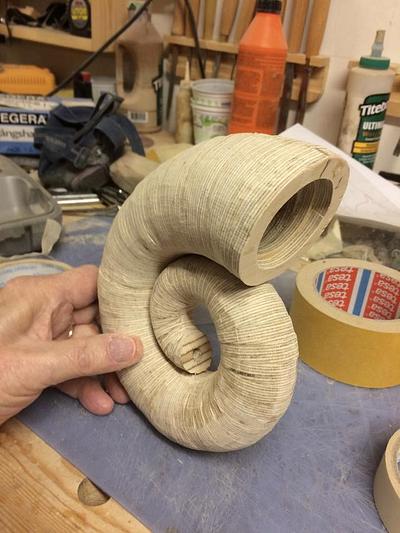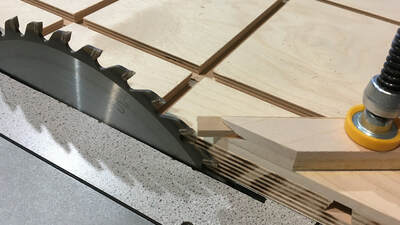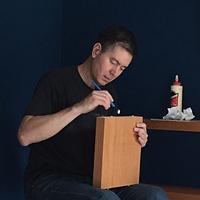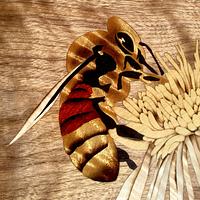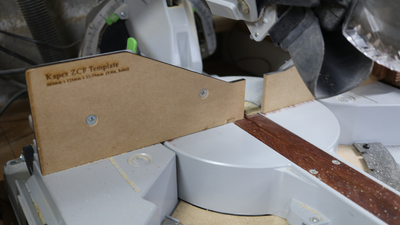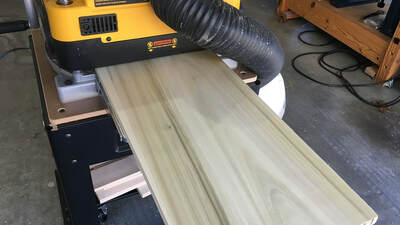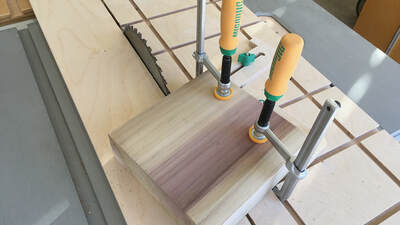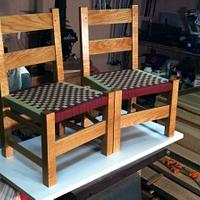Share your craft projects
Make new craft buddies
Ask craft questions
Blog your craft journey
This is one of the two 90% finished horns being made. Last time the square segments were marked out and cut into wedges according to the pattern. N...
Finally, I was ready to start cutting the side segments, starting with the top ends. I clamped the template to the sled with its vertical edge ali...
As this blog is supposed to be about hand dyeing and not marquetry, I'll try to cover the cutting and assembly as quickly as I can. The method he...
Boys and Girls,
After finding an appropriately wide panel (past constructions), the first step was to cut to length. My Kapex has a reach of only ...
Boys and Girls,
I slapped on my shiny new yel...
I found four good 8' long, 12" wide, 4/4 poplar boards at the lumberyard, along with a 4' long, 7-1/2" wide, 8/4 board for the legs. Theoretically,...
Cutting the legs turned out to be one of the most troublesome parts of the project, and the part where I made the most mistakes.
My original plan ...
A 16 point rose is 8 pieces each of two contrasting colors. (And 360/16 = 22.5 degree angles)
You start with a whole lot of straight lines. In t...
Quiet week for us. I finished cutting the scarf joints and fitted them up. Unfortunately the beam twisted so things went a bit slow.
[IMG_2540.jpeg...
The critical step for inlaid dovetails is cutting a rabbet 1st on the tails board ( inside face ). For inlays it is mandatory. The depth of the ra...
First I marked up the pins positions using the tails per Fig 13. Next I set my marking gauge to account for the rebate on the tails board in Fig 1...
This is a tutorial on making a simple jig for cutting wine corks in half, along their length.
The jig requires only simple scraps to build and is...









